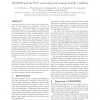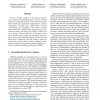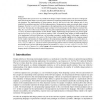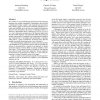909 search results - page 159 / 182 » Supporting dynamic composition of components |
SIGMOD
2005
ACM
14 years 10 months ago
2005
ACM
This paper discusses ongoing research on scientific workflows at the Institute of Computing, University of Campinas (IC - UNICAMP) Brazil. Our projects with bio-scientists have le...
ESCIENCE
2006
IEEE
14 years 1 months ago
2006
IEEE
We view scientific workflows as the domain scientist's way to harness cyberinfrastructure for e-Science. Domain scientists are often interested in "end-to-end" fram...
JOOP
1998
13 years 9 months ago
1998
Design patterns have proven to be very useful for the design of object-oriented systems. The power of design patterns stems from their ability to provide generic solutions to reap...
TLDI
2010
ACM
14 years 6 months ago
2010
ACM
ML modules are a powerful language mechanism for decomposing programs into reusable components. Unfortunately, they also have a reputation for being “complex” and requiring fa...
BMCBI
2007
13 years 10 months ago
2007
Background: By virtue of their shared ancestry, homologous sequences are similar in their structure and function. Consequently, multiple sequence alignments are routinely used to ...




